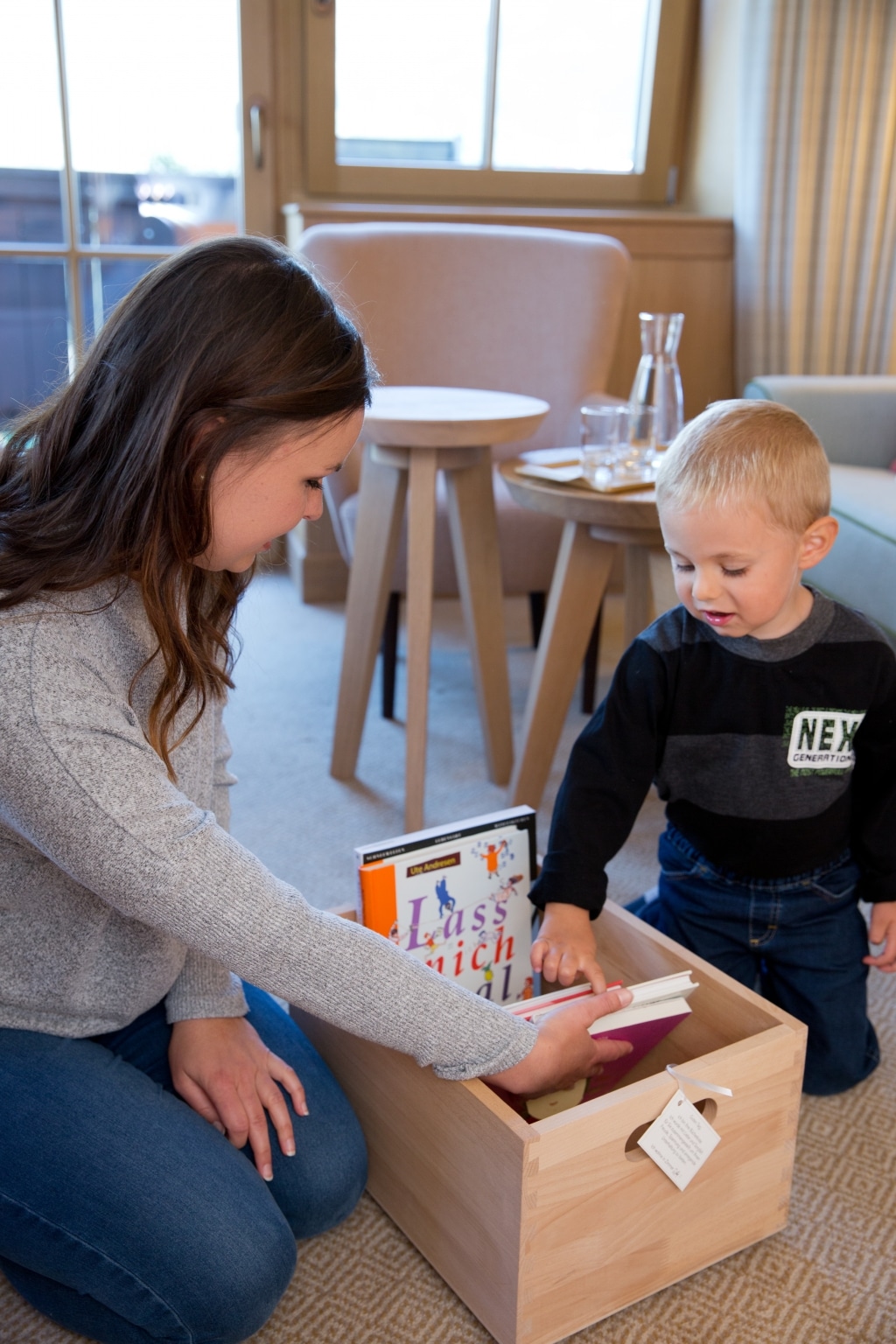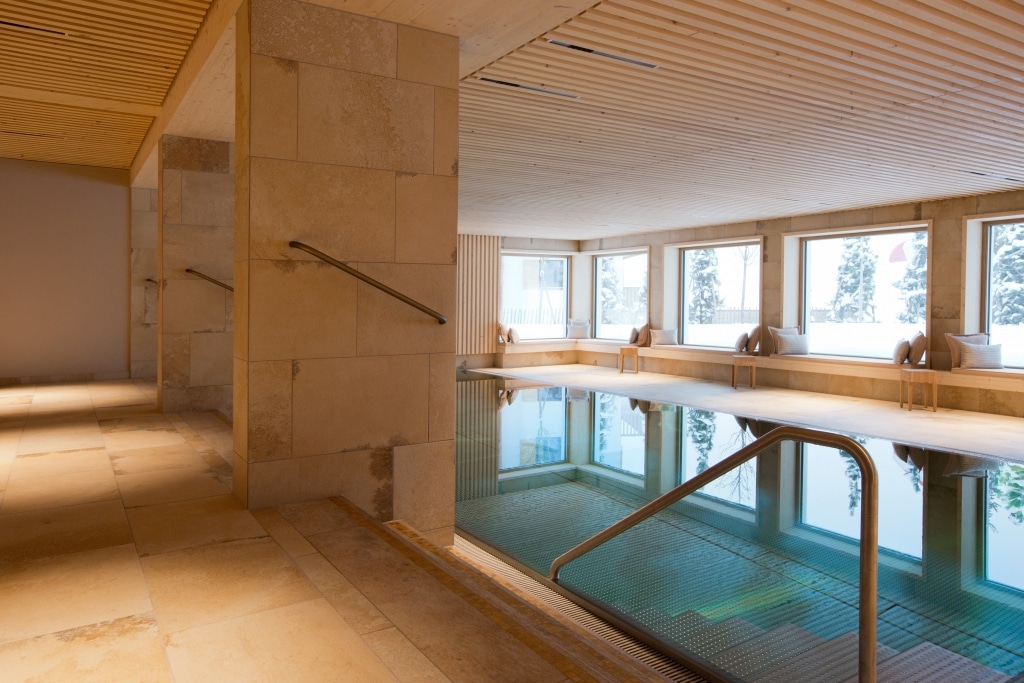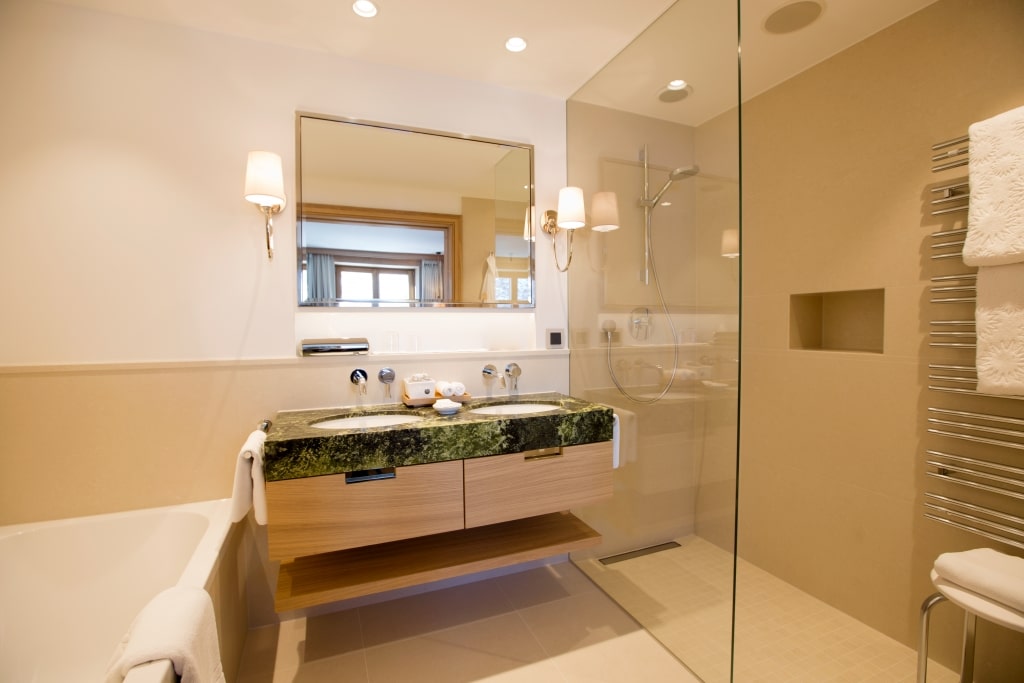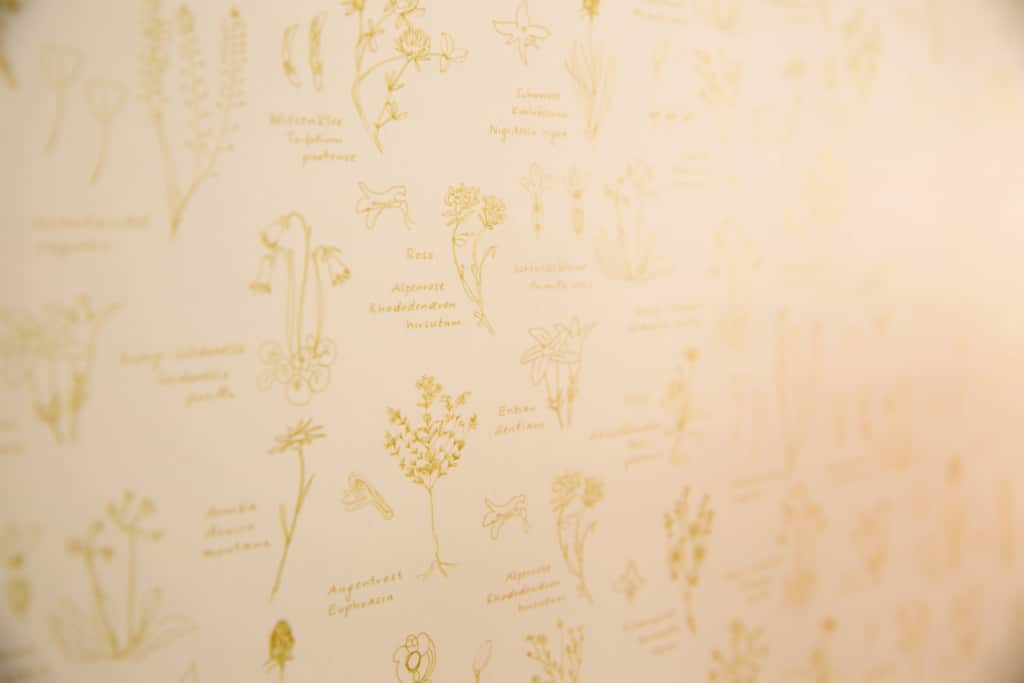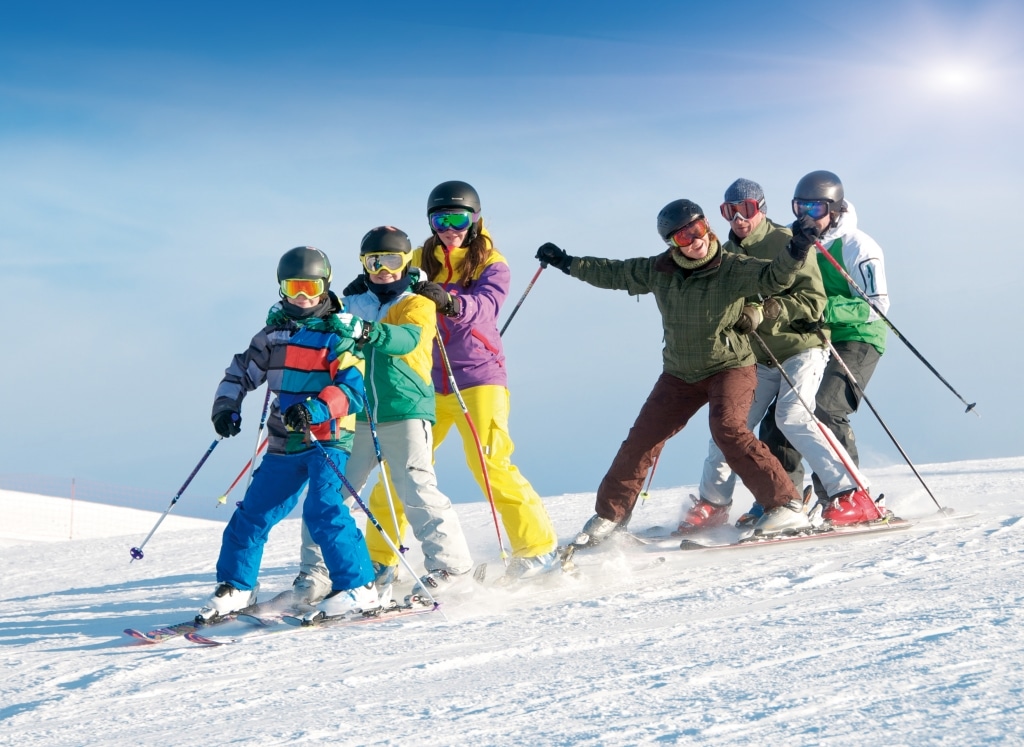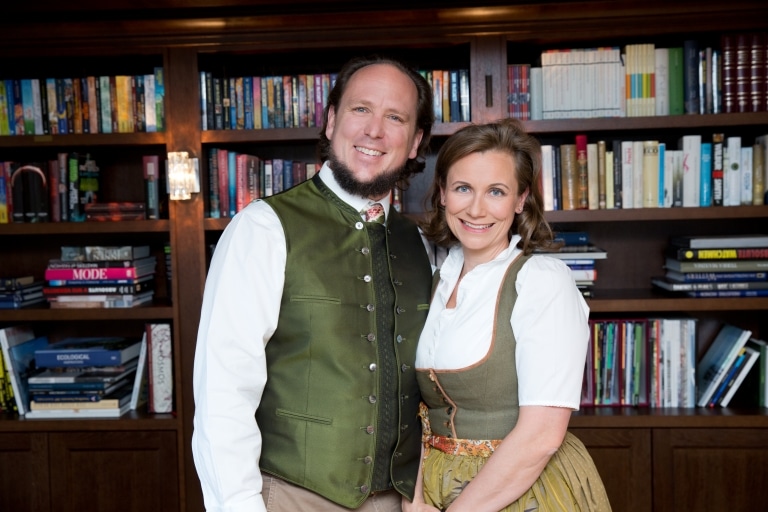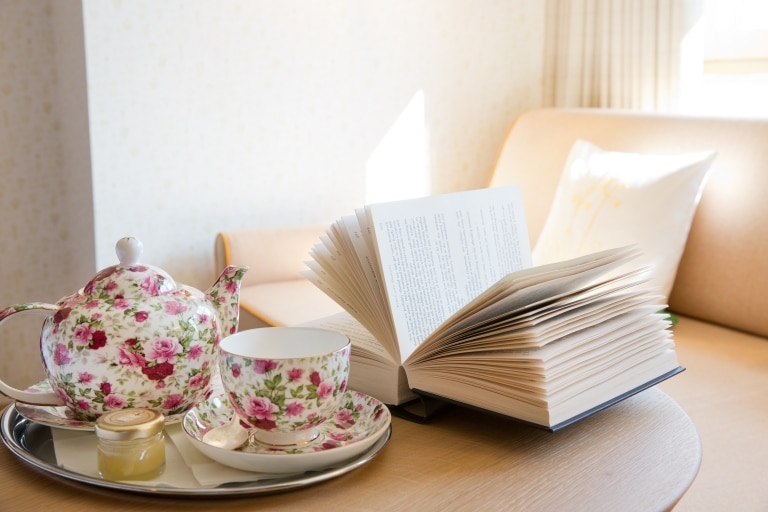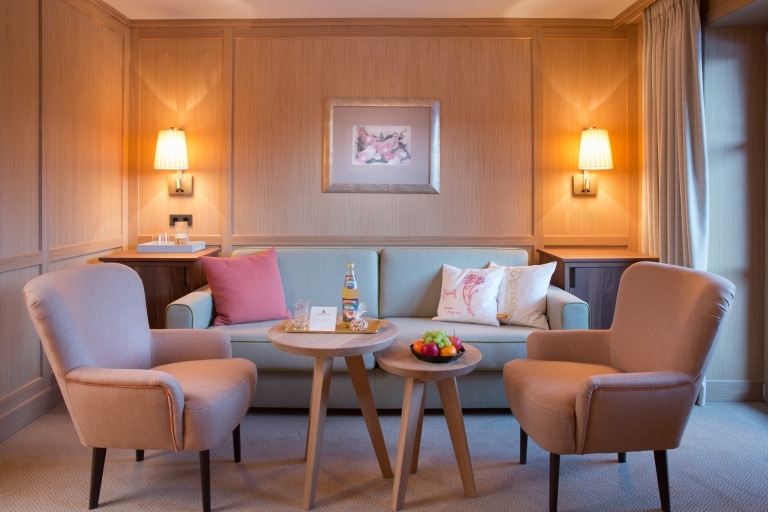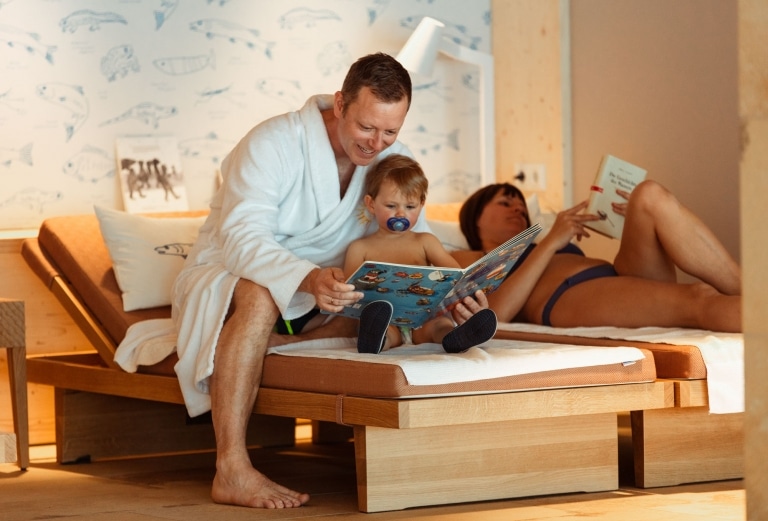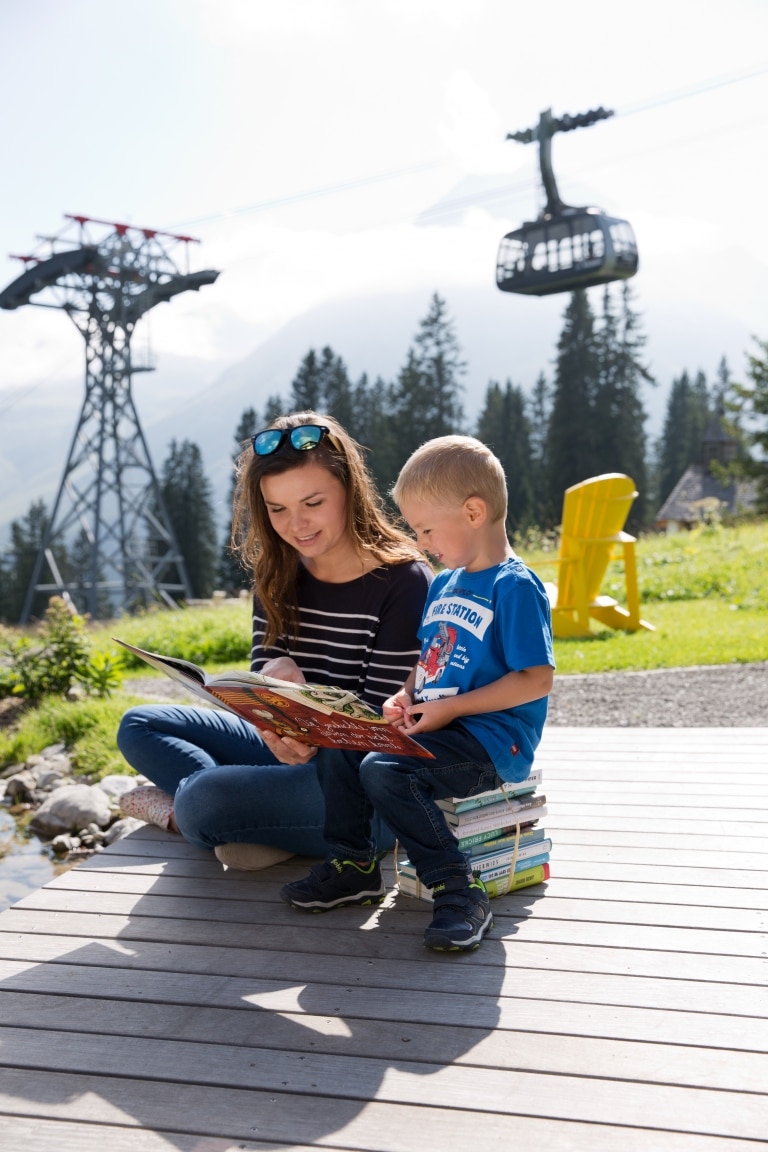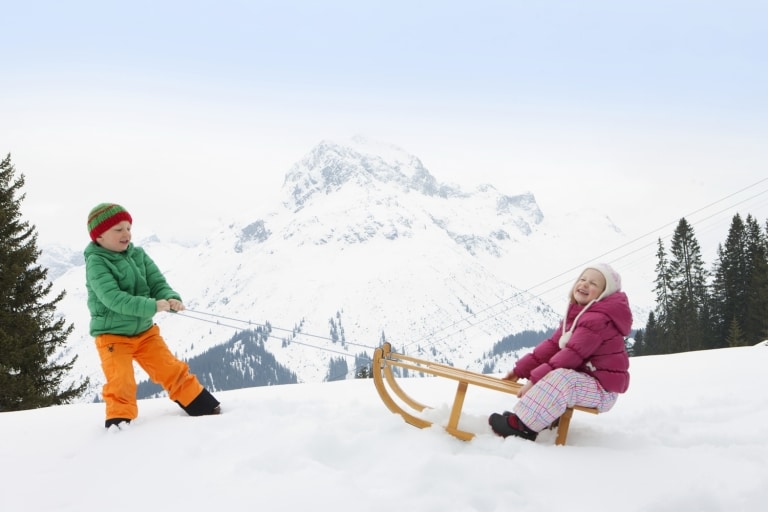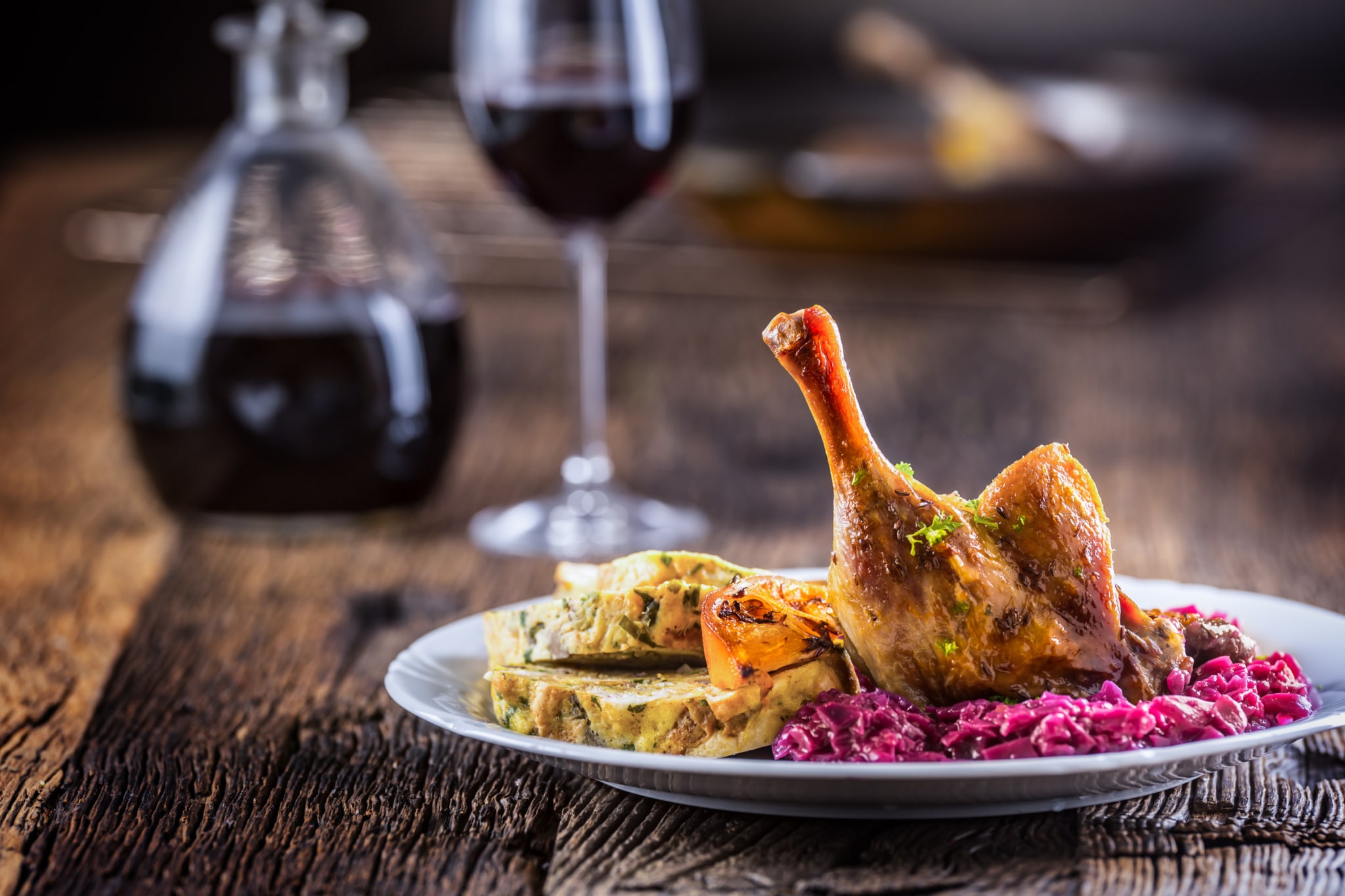
Sonnenburg Christmas Delight for Home
A Recipe for 6 People
The Christmas goose is a real classic at Christmas and must therefore not be missing from this year’s Christmas menu at the Sonnenburg.
There are various legends about the origin of the Christmas goose. For example, in 1588, Queen Elizabeth I of England is said to have just eaten a goose at Christmas time when the news arrived that the Spanish Armada had been defeated. Out of joy over this victory and as a sign of good omen, she is said to have then declared the goose a Christmas feast. Another story – which we particularly like – revolves around the interpretation of geese as fish. Influential gourmets are said to have found the drab Christmas carp too lacking in festivity. Therefore, it was urged that geese, because of their affinity with water, should be considered fish in the sense of the commandments. Since fish was one of the permitted foods during the period of fasting, the term fish was interpreted very generously in the Middle Ages. Thus, not only shellfish, crabs and whales were called fish, but also other animal species that adapted their habitat to bodies of water. This is how the goose became a fish and finally a Christmas feast that conformed to the fast.
Goose and Sauce
Ingredients
- One whole goose (approx. 2 kg) – ready to cook
- Two oranges
- Two apples
- 1 sprig rosemary
- 1 sprig thyme
- Salt & pepper
- 200 ml goose stock
- 150 ml dry white wine
- 5 g cornflour
- 1 teaspoon butter
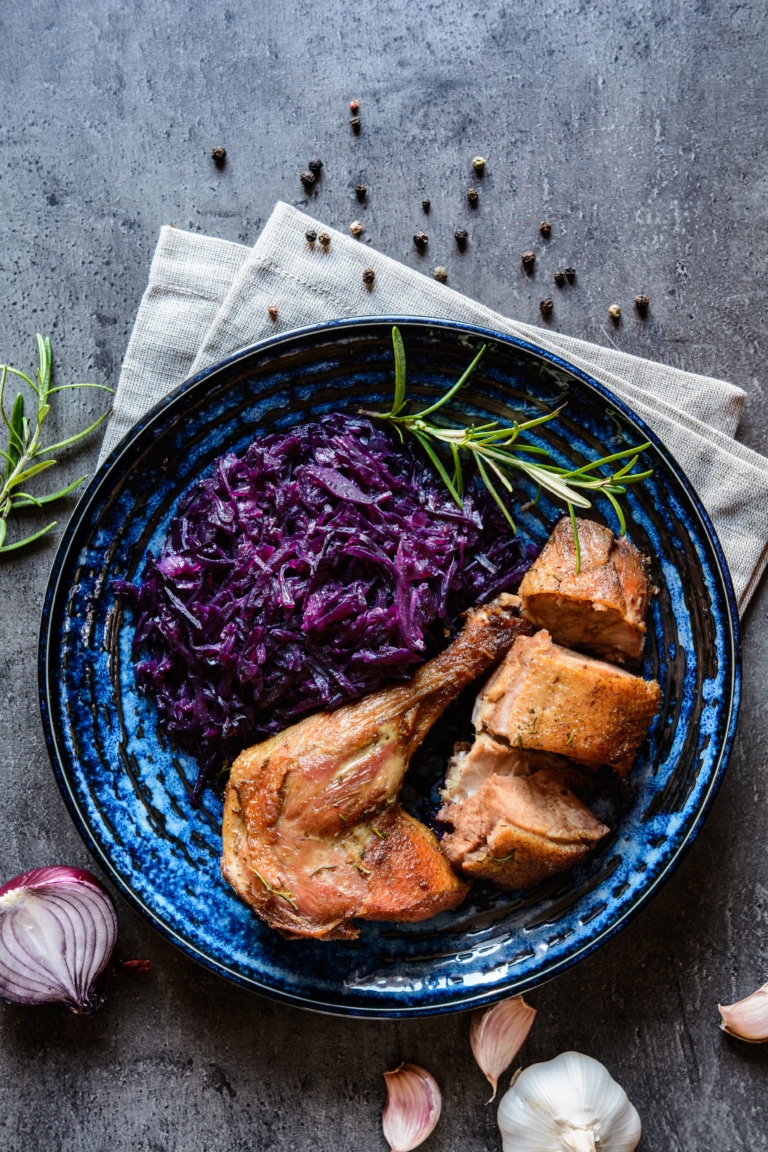
Preparation
Preheat the oven to 160 °C.
Wash the goose inside and out, pat dry. Place the goose on a roasting rack with the breast side up and pierce the skin all around with a skewer.
Now rub the goose well inside and out with salt and pepper.
Halve one of the oranges and pour some of the juice into the duck and the roasting tray. Now stuff the duck with the two orange halves, the whole apples, the rosemary and thyme.
Pour 100 ml of water into the roaster and place in the preheated oven for 80 minutes. During cooking, pierce the goose several times under the legs to let the fat escape. Pour the juices over the goose again and again so that it does not dry out and the skin becomes crispy.
After 80 minutes, increase the oven temperature to 220 °C and leave the goose in the oven for another 20 minutes until it is crispy and golden brown.
Now remove the goose from the oven and wrap it in aluminium foil and set aside to rest.
Skim the fat from the roaster and pour the stock into a wide, shallow saucepan. Add the goose stock and bring to simmer. Now add the white wine and simmer for 3 minutes.
Meanwhile, halve the second orange and squeeze out the juice. Mix the cornflour with two tablespoons of cold water in a small bowl.
First add the fresh juice to the stock and simmer briefly. Then add the cornflour and mix well.
Now season the sauce with salt and pepper and add a teaspoon of butter. Let it simmer briefly again.
Red Cabbage
Ingredients
- 1 kg red cabbage
- 5 star anise
- 1 onion
- 1 apple
- 1 orange
- 2 tbsp goose fat
- 50 g brown sugar
- Pepper & salt
- 2 bay leaves
- 10 g ground cinnamon
- 200 ml vegetable stock
- 50 g cranberries
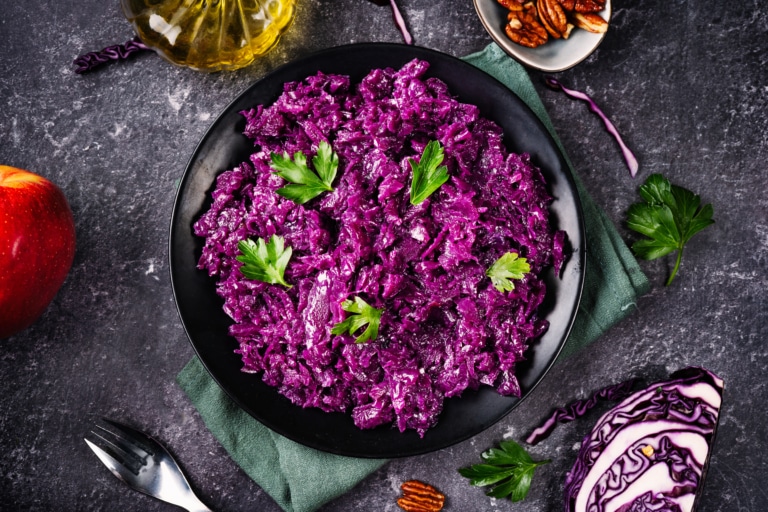
Preparation
Remove the outer leaves from the red cabbage, cut the cabbage head into quarters and cut out the stalk. Cut the quarters into fine strips.
Peel and finely dice the onion.
Grate the apple with a coarse grater. Grate about a teaspoon of orange zest and fillet the orange.
Heat the goose fat in a large saucepan and sauté the onion cubes in it. Sprinkle with sugar so that the onion cubes caramelise slightly.
Add the red cabbage, salt, pepper, bay leaves, star anise and cinnamon. Pour in the vegetable stock and simmer for 30 minutes.
Now add the apple, orange and cranberry and simmer for another 15 minutes.
Bread Dumplings
Ingredients
- 250 g bread cubes
- 1/4 l milk
- salt and pepper
- nutmeg
- 1/2 bunch parsley
- 1 egg
- 1/2 onion
- 1/2 teaspoon butter
- 2 tablespoons flour
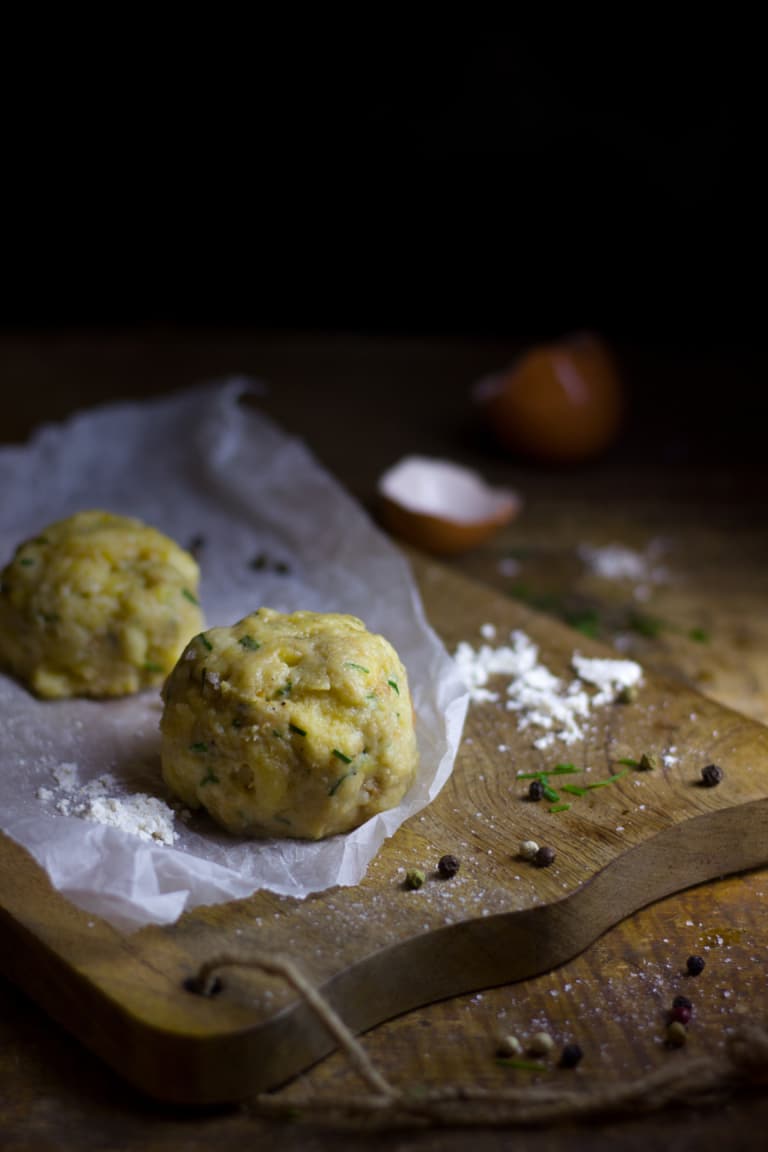
Preparation
Heat the milk and pour over the bread cubes. Let the whole thing steep for half an hour.
Peel and finely grate the onion and sauté lightly in a pan with a little butter (do not let it turn brown). The onions should now cool down.
Finely chop the parsley.
Then break the egg and whisk it. Mix egg, salt, pepper, nutmeg and the parsley into the soaked bread mixture.
Add the cooled, sautéed onions to the dumpling mixture and knead everything well.
Finally, mix in the flour.
Moisten your hands with cold water and form even dumplings from the dough.
Place the bread dumplings in a large pot of lightly boiling salted water for 15 – 20 minutes (depending on size) until they rise to the top. Then remove the bread dumplings from the water.
Arrange the dish
Finally, it’s time to arrange the dishes – after all, the eye eats too.
To do this, carve the goose. First cut the wings on the body with a knife and cut through the joint. Then cut both legs with the knife, first all around and then cut through the joint. Place the legs on the skin side and cut through the joint. This way it can easily be divided into the lower and upper leg and thus portioned. Cut down the breast meat of the goose parallel to the breastbone in each case. Then place the breast with the skin facing upwards on the board and cut diagonally into strips.
Now arrange the pieces of goose on a platter. Place the sauce and the red cabbage in a bowl on the table. Arrange the bread dumplings on a platter and garnish with some fresh parsley.
